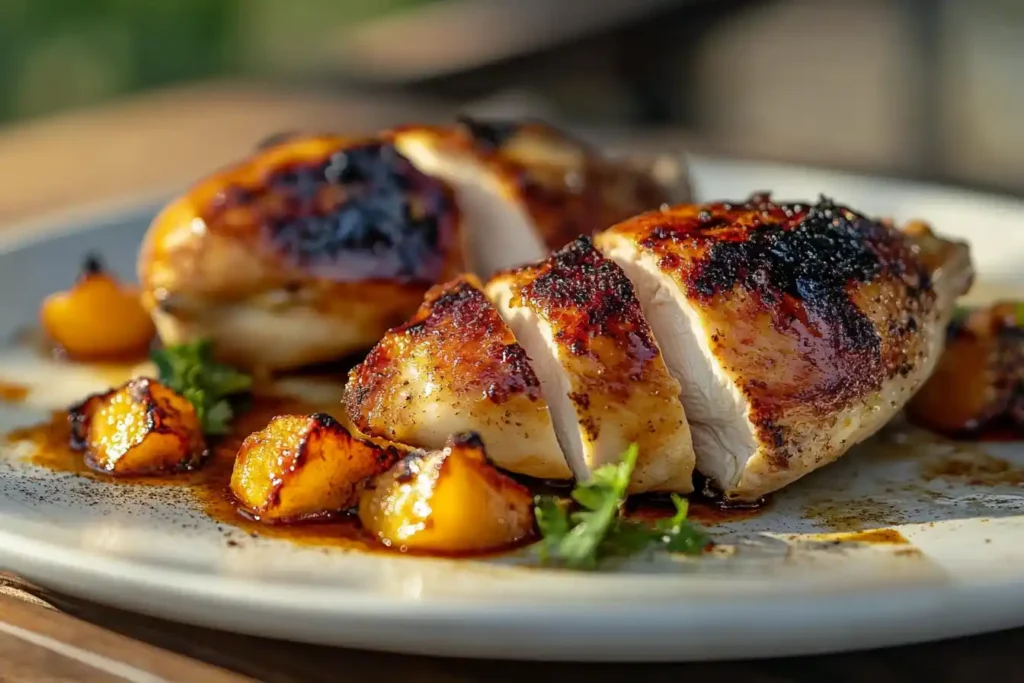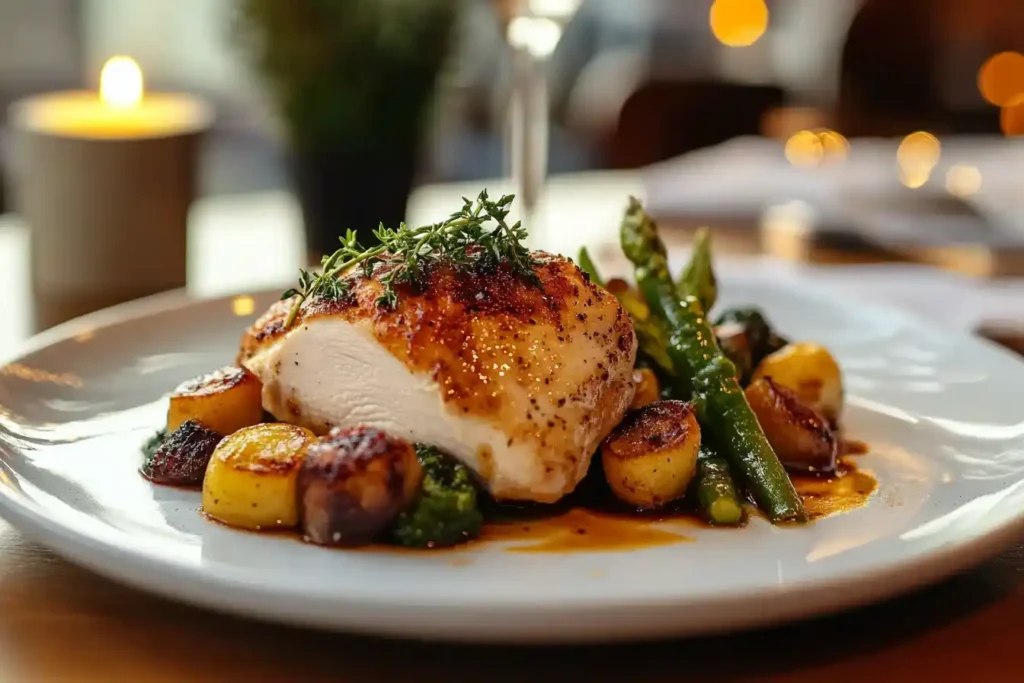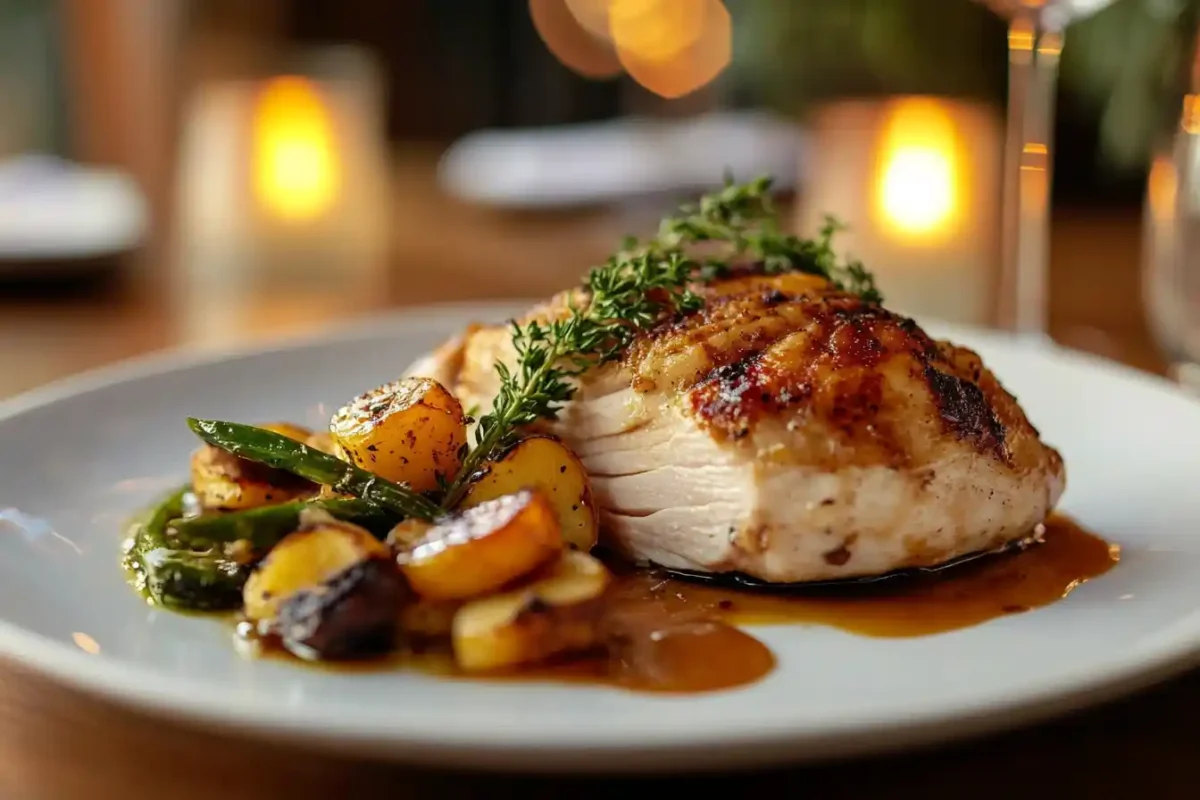Master these techniques to create tender, moist, and flavorful chicken every time. For a deeper dive into everything you need to know about this versatile protein, check out The Ultimate Guide to Boneless Skinless Chicken: Versatile, Healthy, and Delicious. Understanding what are the methods of cooking chicken breast? is essential for home cooks in the U.S. who love this versatile protein. These methods include grilling, baking, sautéing, poaching, and more. By exploring cooking methods for chicken breasts, you can find the best approach that matches your taste, time, and skill level.
Chicken breast is one of the most versatile and popular proteins in American kitchens. Its lean, mild flavor makes it a blank canvas for countless cooking techniques, seasonings, and global cuisines. Whether you are a beginner or a seasoned home cook, mastering the various methods of preparing chicken breast allows you to create tender, juicy, and flavorful dishes every time. From grilling and baking to poaching and stir-frying, each approach offers unique benefits, textures, and flavors suited for different occasions, skill levels, and health goals.
In this guide, we will explore the most effective cooking techniques, provide tips for perfect results, and share ideas to elevate the flavor and texture of chicken breasts. By understanding how to cook this versatile ingredient, you can enjoy meals that are not only nutritious but also delicious and satisfying.
Understanding Chicken Breasts
Chicken breasts remain a favorite choice for U.S. home cooks. Before choosing a specific method, know your ingredient. Boneless, skinless chicken breasts cook faster but can dry out if overcooked. Conversely, bone-in and skin-on pieces often stay juicier. Thicker pieces need more time, so consider pounding them into even thickness.
Additionally, pick quality chicken from reputable retailers. Trim visible fat and loose bits. Brining or marinating helps keep it moist. Use a meat thermometer, cutting board, good knives, and pans designed for your chosen technique. Eventually, these steps ensure better results and safer meals.
Common Cooking Methods and Their Variations
Advancing to the next topic, let’s explore different techniques and their pros, cons, and details. Knowing what are the methods of cooking chicken breast? involves understanding each approach’s unique benefits.
Baking/Roasting Chicken Breasts
Baking or roasting chicken breasts in the oven is simple. Preheat to around 375°F (190°C). Season with salt, pepper, and herbs. Place the chicken on a lightly greased sheet pan. Although the time depends on thickness, it usually takes about 20-30 minutes until the internal temperature hits 165°F (74°C). This oven-based method locks in moisture and produces a mild flavor that pairs well with many sides.

Grilling Techniques for chicken breast
Grilling offers a smoky, charred flavor. Preheat your grill, oil the grates, and season the chicken. Afterwards, place it over direct heat for grill marks. Then move it to indirect heat until it reaches 165°F. Gas grills are convenient, charcoal adds richer taste, and electric grills simplify indoor cooking. This method is perfect for summer meals and light dinners.
Pan-Frying and Sautéing Methods
Pan-frying and sautéing use a skillet over medium-high heat. Choose an oil with a high smoke point like canola or avocado oil. Another option is to add a little butter at the end for flavor. Cook until the outside is golden and the inside is fully done. This quick method suits busy weeknights. It delivers a crisp exterior while keeping the interior moist.
Poaching and Boiling Techniques
Poaching involves gentle simmering instead of rapid boiling. Submerge chicken breasts in a broth or water flavored with aromatics like bay leaves, garlic, or peppercorns. Eventually, this method yields tender, juicy meat perfect for salads, sandwiches, and shredding. It adds no extra fat and helps maintain lean, healthy protein.
Broiling Chicken Breasts
Broiling cooks chicken quickly under direct, intense heat from the oven’s top element. To begin, season the chicken and place it a few inches below the broiler. However, you must watch it closely to prevent overcooking. When done right, broiling creates a lightly charred surface and a succulent interior. Moreover, this method introduces variety to your cooking routine, making it an excellent alternative to other techniques.
Stir-Frying chicken breast
Stir-frying works well with small, uniform pieces. First, heat oil in a wok or skillet over high heat. Next, add chicken and cook swiftly until browned. Then, introduce vegetables, sauces, and spices to the pan. This method not only locks in nutrients but also offers global flavor profiles. As a result, it produces colorful, balanced meals. Ultimately, stir-frying is ideal for those who enjoy diverse and vibrant dishes.
Slow Cooking Methods for Chicken Breast
Slow cooking uses a crockpot to cook over several hours. For example, you can add a little liquid and seasonings, set the temperature, and then let it work. As a result, this method produces pull-apart tender chicken that fits well in tacos, casseroles, or soups. Moreover, busy families appreciate the convenience of starting in the morning and returning to a ready meal at dinnertime.
Pressure Cooking and Instant Pot Techniques
Pressure cooking speeds up the cooking process by sealing in steam. Follow the manufacturer’s directions for liquid ratios and timing. Once done, use a natural release for extra tenderness. This method ensures juicy chicken that you can shred or slice. It is perfect for fast, nutritious meals when time is short.
Sous Vide Cooking Chicken Breasts
Sous vide uses a temperature-controlled water bath. Seal seasoned chicken in a plastic pouch and place it in the water. Cook to your chosen doneness, then quickly sear it in a pan. Sous vide delivers consistent, perfectly cooked chicken every time. It might require special equipment, but the gourmet-level results justify the effort.
Air Frying Chicken Breasts
Air frying circulates hot air around the chicken. A light coating of oil creates a crisp exterior without deep frying. This method yields a fried-like result with less fat and fewer calories. Time and temperature settings vary by model, but it is straightforward and reduces guilt without compromising flavor.
Smoking Chicken Breasts
Smoking infuses chicken with deep, rich flavors. Use wood chips like hickory or applewood. Cook low and slow to allow the smoky aroma to penetrate. Smoking demands patience and special equipment, but the outcome is unique and worth the effort. It’s a top choice for barbecue fans who love layered flavors.
Flavor Enhancements and Marination Tips for Chicken Breast
In the next subdivision, let’s discuss ways to boost flavor. To begin with, marinating chicken breasts in citrus juice, yogurt, or herb pastes can break down proteins and improve tenderness. Additionally, dry rubs create a tasty crust, enhancing texture and flavor. Similarly, brining adds moisture through a salted water solution, ensuring juicier results. Finally, finish cooked chicken with a glaze or a drizzle of sauce to provide a burst of flavor and shine.
Besides, fresh herbs, garlic, and lemon zest lift flavors naturally. Choose flavors that match your cooking method. For example, robust herbs and paprika-based rubs suit grilling, while mild citrus and dill work well with poaching. Adjust seasoning to your taste. Over time, you will master flavor combinations that make your chicken stand out.
Tips for Perfect Texture and Juiciness
In the succeeding section, never rely on guesswork. Use a meat thermometer to confirm the inside reaches 165°F (74°C). Allow a few minutes of rest time before slicing. Resting lets juices redistribute throughout the meat. Cut against the grain to ensure each bite feels tender.
To achieve crispy skin, select bone-in, skin-on breasts and roast or grill at higher heat. If dryness is an issue, try brining or marinating before cooking. Adjust cooking times and temperatures as you gain experience. These simple steps help you produce moist, succulent chicken every time.
Pairing Chicken Breast with Sides and Sauces
In the ensuing segment, consider what complements chicken breasts. Serve them with classic sides like mashed potatoes, rice, or roasted vegetables. For lighter options, add a green salad or steamed vegetables. Sauces such as barbecue, lemon butter, or mushroom cream bring complexity.
Draw inspiration from global flavors. For instance, try Italian herbs for a rustic touch, Asian stir-fry sauces for a savory twist, or Mexican-style spices to add a bit of heat. To ensure a balanced meal, pair lean chicken breasts with nutritious sides and flavorful sauces. This combination not only creates a well-rounded plate but also suits many diets and preferences.

Nutritional Considerations
In the next phase, focus on health. For instance, chicken breasts are lean and high in protein, making them a smart choice for those aiming to maintain or reduce weight. Moreover, poaching, grilling, and baking require little or no extra fat, helping you prepare healthier meals. To control sodium intake, consider using less salt or opting for low-sodium seasonings.
Additionally, combining chicken with whole grains, legumes, and vegetables provides added nutrients, creating balanced and satisfying meals. Furthermore, adjusting portion sizes allows you to better meet your personal dietary goals. By selecting cooking methods that emphasize lean preparation, you not only nourish the body but also create meals that please the palate.
Storing and Reheating Cooked Chicken Breasts
Moving forward to the next topic, store cooked chicken breasts safely. Refrigerate leftovers promptly in airtight containers. Use them within 3-4 days. Freeze for longer storage. When reheating, use the oven or a microwave, but be careful not to dry it out. Add a splash of broth or sauce to help maintain moisture.
Leftover chicken suits many quick dishes. Shred it into salads, tuck it into wraps, or add it to soups. This reduces waste and ensures you enjoy the fruits of your kitchen efforts for days to come.
Frequently Asked Questions (FAQs) About Chicken Breast
What cooking method is best for chicken breast?
The best method depends on personal preference and desired flavor. Grilling adds smoky character, baking is simple and reliable, and poaching keeps it lean. Basically, all methods answer the question what are the methods of cooking chicken breast? in different ways.
What cooking method is used for chicken?
Chefs and home cooks use many methods: baking, grilling, pan-frying, poaching, slow cooking, and more. Each technique suits different flavor goals and textures. Experiment to find what works for you.
How is chicken breast cooked?
Simply season, choose a method (e.g., roasting, sautéing), and cook to 165°F (74°C). Adjust heat and time as needed. Proper cooking ensures safe, juicy chicken with the flavor profile you prefer.
What are the five ways to cook chicken?
Common options include baking, grilling, sautéing, poaching, and slow cooking. These core methods cover a wide range of textures and flavors, giving you many dishes to enjoy.
What is the healthiest way to cook chicken breasts?
Methods like poaching, grilling, and baking use little added fat and preserve nutrients. They make chicken breasts a heart-healthy source of lean protein.
Conclusion
On to the following discussion, mastering what are the methods of cooking chicken breast? makes your meals more varied and satisfying. From grilling and baking to poaching and air frying, each approach adds its own twist to taste and texture. Ultimately, the right method depends on your goals—whether you want speed, health, flavor, or convenience.
In the next division, keep experimenting with seasonings, marinades, and sides. Afterwards, follow food safety measures, use a thermometer, and monitor cooking times. Finally, as you gain experience, you will feel confident choosing the best method to create mouthwatering chicken breasts that delight both you and your guests.

